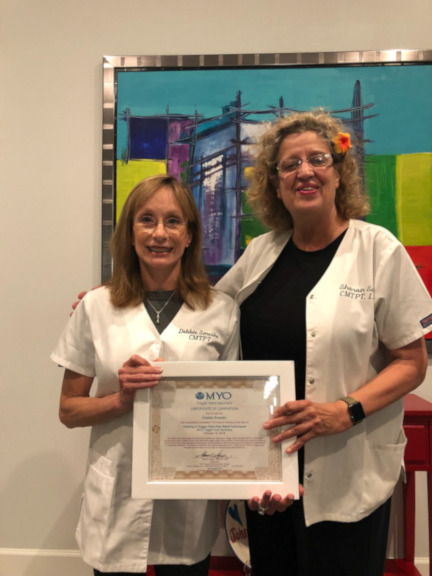
Debbie Smesko, CMTPT
Odessa Florida 10/13/2018
What is MYO Training?
The MYO training series is geared towards current massage therapists, chiropractors, accupuncturists, pain doctors and other body workers who are looking to deepen their understanding of the myofascial system and help patients suffering common acute or chronic pain and dysfunction.
MYO training — a series of one or two-day courses — lays a solid foundation in the principles of the myofascial trigger point therapy, and provides a breadth of clinical, practical and business skills to ensure students can build a successful practice.
If you’re considering the training program, here are a few things you might like to know . . .
Why should I consider the training?
Graduates of the core program will be able to effectively treat common pain and dysfunction problems, including but not limited to:
- headache
- frozen shoulder
- tennis or golfer’s elbow
- mouse arm
- sciatica
- low back pain
- carpal tunnel syndrome
- knee pain
- foot, ankle and heel pain
- temporomandibular joint disorder (TMJD)
- fibromylagia
- and many more conditions
Knowing how to treat referred pain will give you a powerful skill which most main-stream practitioners don’t understand or utilize. By providing an effective alternative to prescription pain-killers or surgery, you’ll be meeting the needs of people who are increasingly aware of the risks of drugs and surgery, and looking for a different approach to pain relief. The ability to treat and relieve muscular pain and dysfunction will enhance your value to patients and pain treatment specialists/facilities.
What we’ll learn?
The program is based on the body of knowledge and treatment protocols developed by Dr. David Simons and Dr. Janet Travell (personal physician to President John F. Kennedy), as well as the 40+ years of clinical experience gained by MYO training leaders.
During the training series, you’ll learn the principles of myofascial trigger point therapy, including how to identify the causes and common perpetuating factors behind referred pain and dysfunction in muscles and fascia throughout the body. You’ll also learn practical clinical skills like how to position the patient for treatment, how to incorporate stretching and contraction, and where and how to apply compression using fingers, knuckles, the hand or elbow, and various self-care tools and other methods.
The training courses each focus on a different area of the body or aspect of clinical practice. The core topics covered include:
- The Principles of Myofascial Trigger Point Therapy
- Head & Jaw Pain Relief
- Neck Pain Relief
- Shoulder, Upper Back & Upper Arm Pain Relief
- Elbow, Forearm & Hand Pain Relief
- Chest, Abdomen & Mid-Back Pain Relief
- Low Back & Hip Pain Relief
- Buttocks & Sacrum Pain Relief
- Thigh & Knee Pain Relief
- Calf & Ankle Pain Relief
- Foot Pain Relief
- Courses focusing on special conditions such as:
- Fibromyalgia & Complex Myofascial Pain
- Acute & Sports Injuries
- The Business of Myofascial Trigger Point Therapy
How we’ll learn?
While the courses involve traditional educational techniques like lectures and readings, a significant portion of the process involves demonstrations, hands-on exercises, and performing self-care protocols.